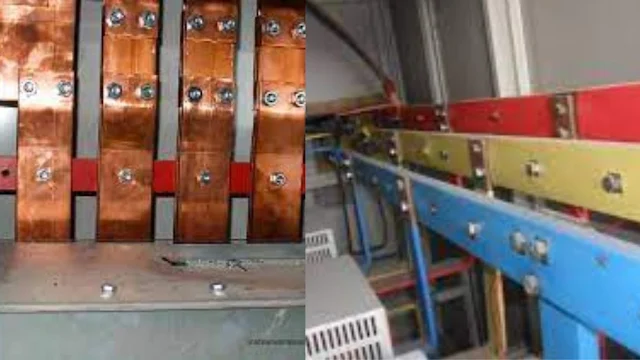What is electrical Bus Bar?
In the world of electrical power distribution, bus bars play a crucial role in efficiently transmitting and distributing electrical energy. A bus bar is an electrical conductor that acts as a central point for connecting multiple power sources or loads. This comprehensive guide will delve into the concept of electrical bus bars, explore their importance, and shed light on the different types of bus bars commonly used in various applications.
Electrical bus bars play a crucial role in ensuring the efficient and reliable distribution of electrical power within a system. Understanding the different types of bus bars and their applications is essential for designing, implementing, and maintaining robust power distribution systems. Whether it's a single bus bar, double bus bar, ring bus bar, or sandwich bus bar, each configuration offers unique advantages depending on the specific requirements of the electrical system.
An electrical bus bar is a metallic strip or bar made of copper, aluminum, or other conductive materials. It serves as a common connection point for electrical devices within a power distribution system. The main purpose of a bus bar is to efficiently and safely conduct electrical current between various components, such as generators, transformers, circuit breakers, and loads.
Importance of Bus Bars
- Power Distribution: Bus bars provide a centralized location for power distribution, allowing multiple devices to connect to a single source, such as a transformer or generator. They ensure a reliable and stable power supply to the connected devices.
- Current Carrying Capacity: Bus bars are designed to carry high currents without significant voltage drops. Their low impedance and high current-carrying capacity help minimize power losses and maintain the integrity of the electrical system.
- Reducing Complexity: By providing a common connection point, bus bars simplify the wiring and interconnection process, making installations more organized and manageable. They eliminate the need for extensive individual wiring between components.
Types of Bus Bars:
- Single Bus-Bar: This is the simplest and most basic type of bus-bar configuration. It consists of a single conductor bar connecting all the components within the system. While it is straightforward, this configuration lacks redundancy, making it less reliable in case of a fault or maintenance.
- Double Bus-Bar: The double bus-bar configuration involves two parallel bus bars, often referred to as the main bus and the transfer bus. One bus acts as the primary source, while the other serves as a backup or alternative source. This setup allows for seamless maintenance, testing, and fault isolation by transferring the load from one bus to the other.
- Ring Bus-Bar: In a ring bus-bar configuration, the bus-bars form a closed loop, providing multiple paths for the current flow. This redundancy ensures an uninterrupted power supply even in the event of a fault or maintenance. Ring bus bars are commonly used in critical infrastructure and large-scale power systems.
- Sandwich Bus-Bar: The sandwich bus-bar consists of multiple conductive layers separated by insulating material. It allows for the connection of numerous devices on both sides, effectively increasing the power density and providing space-saving solutions in compact installations.
Advantages of Bus-Bars:
- Efficient Power Distribution: Bus bars provide a centralized point for distributing electrical power, ensuring a reliable and efficient flow of electricity to connected devices. They minimize voltage drops and power losses, resulting in better overall system performance.
- Simplified Wiring and Installation: Bus bars simplify the wiring process by providing a common connection point for multiple devices. This reduces the complexity of individual wiring between components and makes installation more organized and manageable.
- Increased Flexibility: Bus bars allow for easy expansion and modification of the electrical system. Additional devices can be connected to the bus bar without extensive rewiring, saving time and effort during system upgrades or changes.
- Enhanced System Safety: Bus bars are designed to handle high currents safely. They provide a low-impedance path for current flow, reducing the risk of overheating and electrical faults. Additionally, bus bars can be equipped with protective measures such as circuit breakers and insulation to enhance system safety.
- Fault Detection and Isolation: Depending on the bus-bar configuration, such as double bus-bar or ring bus-bar, faults can be easily detected and isolated. These configurations allow for seamless maintenance, testing, and the ability to transfer loads from one bus bar to another in the event of a fault.
Disadvantages of Bus Bars:
- Cost: The installation of bus bars can involve significant upfront costs, especially for larger systems or applications requiring specialized configurations. The cost of materials, such as copper or aluminum, and the complexity of design and installation can contribute to higher expenses.
- Space Requirements: Bus-bars, especially in high-power applications, require adequate space for installation. The size and layout of the bus-bar system need to be considered during the design phase to ensure sufficient space availability in the electrical facility.
- Limited Redundancy: Some bus-bar configurations, such as a single bus-bar, lack redundancy. In case of a fault or maintenance, the absence of an alternative source can result in downtime and interruptions in power supply. Configurations like double bus-bar or ring bus-bar offer higher levels of redundancy to mitigate this limitation.
- Maintenance Complexity: Bus-bar systems require periodic maintenance to ensure their optimal performance and safety. Depending on the complexity of the system and the type of bus-bar configuration, maintenance tasks, such as inspection, cleaning, and testing, can be challenging and time-consuming.
